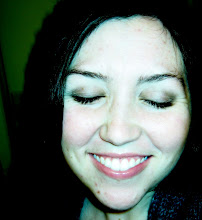
It was immediately apparent, with the crackling of the spine upon opening, that I was the first person to ever check this book out. Flipping through it I noticed there were several pictures on every page, a good sign for a how-to book. Many of the pictures were low-quality and pixelated however which I found a bit disconcerting but I figured the book probably had a lot of practical information for me nonetheless. I was fairly certain that I would get useful up-to-date information based on the copyright date of 2004 and the subtitle “A Manual of Foam Injection, Build-up, and Finishing Techniques”. From all indications, the book had a straightforward goal. The preface states that the book “synthesizes the author’s 30-plus years of puppet-making experience as it applies to the magical art form of stop-motion puppet animation”. I was expecting, based on the quality of the pictures and the author’s background, a book full of practical knowledge written by someone who knew about animation but not about writing books.
The book begins with introductory/background information on research, design, sketching and sculpting, followed by a chapter focusing on the sculpting process specifically. Much of this information was basic and would be common knowledge to any art student, but it did provide the foundation work for the remaining chapters. The following chapters were more detailed accounts of the construction techniques, foam injection and foam build-up. I found the progression to be logical and felt like the directions were detailed enough that I could reproduce Brierton’s results given the same materials.
All the pictures are black and white. Because there are so many of them and they absolutely need to accompany the text, the low quality of the images became a distraction. I also found numerous typos throughout the book. The general ideas presented came through despite the shortcomings mentioned. I learned that the exact techniques that the author uses are largely impractical for in-home use, i.e. very high oven temperatures, toxic fumes, and specialty supplies. Acquiring all the materials needed would be very costly for a startup project (Brierton includes a list at the back of the book with suppliers from all over the country for 8 different necessary specialty supplies). One frustration I had was that Brierton often references the stores he shops at in his hometown. The inclusion of those references assured me of the reality of his knowledge but also distanced me from his processes. It was like I knew he was giving good directions but they were too specific for me to be able to follow them exactly.
I learned that being able to control all of the technical processes of the foam injection technique pays off with the result of a very professional, durable puppet. However I also learned that simply utilizing mattress foam from a craft shop to build up body mass on a wire armature would be effective enough to suit my purposes. I understand the importance of not using modeling clay or plasticine for the entire puppet because of the difficulties arising from the cumulative weight of the clay, something I had not considered before reading it. Foam is a good lightweight filler material. Brierton uses a latex skin to finish the puppets made with the build-up method. Latex however poses many of the same in-home problems as the foam injection method does.
The level of detail provided by the author convinced me of the validity of the techniques presented in this book. However, some shortcomings with the writing and pictures made it hard to fully absorb everything. In general what I got from this book is:
- There are a variety of puppet sculpting methods to consider-each with its own advantages and disadvantages.
- The structural integrity of the armature is crucial for a successful puppet.
- Weight of the puppet should be minimized.
- Finishing materials should be flexible enough to allow for motion without causing defects or damage that will show up on film.
- Taking time and making careful considerations during the puppet-building stages can save you from big headaches during filming.

No comments:
Post a Comment